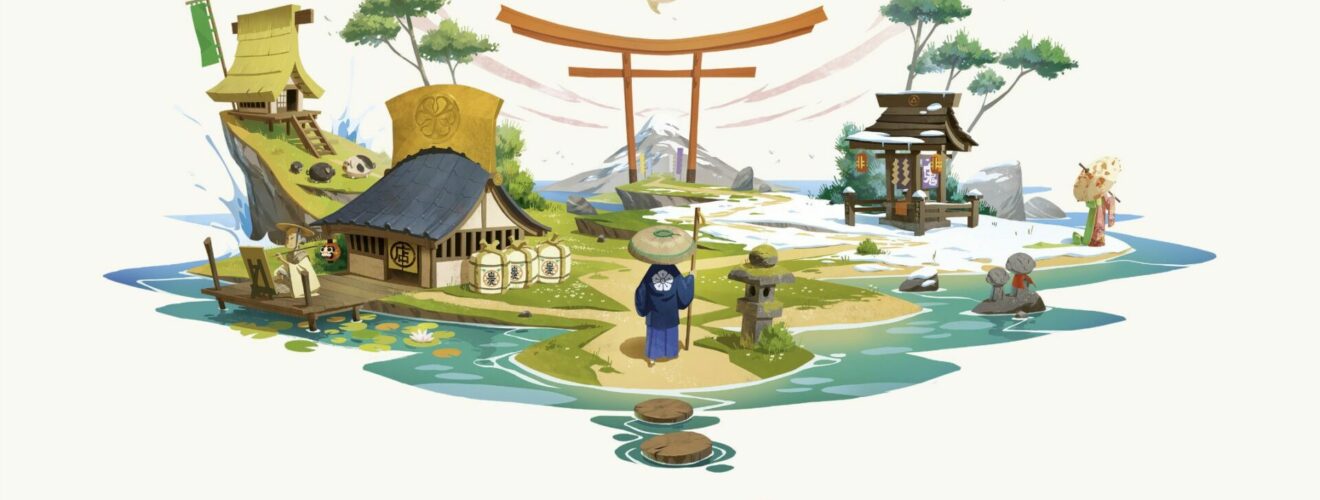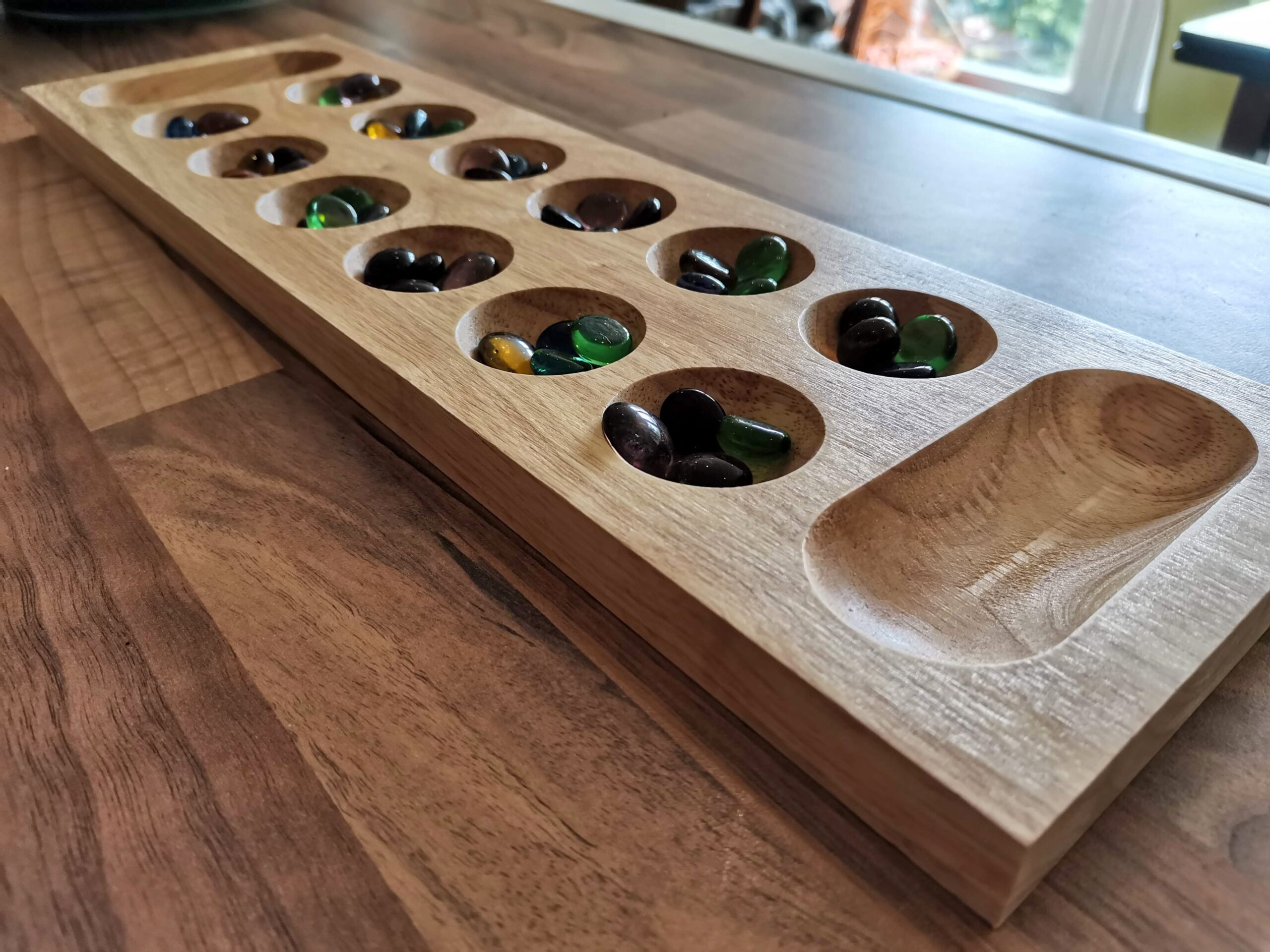Tokaido (and new solo mode) Review

A review copy of Tokaido was kindly provided by Stonemaier Games. Thoughts & opinions are my own.
As I proved before with my review of Hamburgum, I have my finger on the pulse when it comes to board game hotness. So join me as I celebrate one of the hottest games of 2012 – Tokaido! Facetiousness aside, if you’re relatively new to the hobby, there’s a good chance you’ve never actually seen or played Tokaido, despite the fact it was everywhere for a few years. Stonemaier Games clearly saw the lasting appeal of the thirteen-year-old classic and have reprinted the game in a nearly 1:1 reproduction of the original. If you remember Tokaido, that might be good news, but if it’s new to you, you might be wondering whether it’s worth picking up. The answer is yes, but also maybe no.
Hit the road, Junichi
In Tokaido, players take the roles of travellers on Japan’s famous Tokaido – the east sea road between Kyoto and Edo. Along the way, you visit hot springs, take in the scenery, and even buy hot meals and souvenirs. The game board is a linear track featuring all of the different kinds of spaces to visit as spots to stop at. The player furthest back on the road simply moves their character forward to an empty space and claims whatever’s on it, whether that be earning money at a farm, buying a souvenir at a shop, or resolving an encounter. Then the process repeats – the player furthest back, even if it’s the same player who just took a turn, takes a turn.

The only time you’re forced to stop is at the few inns along the trail, where you get a chance to buy food and score some more points in the process. In essence, it’s a set collection game with a kind of unravelled rondel. You can move forward, but never backwards, so you face the constant choice of moving slowly and visiting more spaces, which may not be the ones you want, or moving in bigger steps and getting the actions you’re after, but doing them fewer times.
It’s tricky, and despite this being the second time I’ve owned the game, I’m still no better at the strategy. I’m sure there is an efficient way to play and score well, I’m just not sure what it is. Each time I try to concentrate on doing one thing well, I can almost guarantee that someone else will beat me. I’m not sure it really matters, though.
花見
Unless I’ve absolutely butchered my limited Japanese, that’s the word ‘hanami’, which basically means ‘viewing flowers (cherry blossom)’. I’ve written it to illustrate a concept that’s core to the game. In a country which values appreciating the world around you and has words to express it, Tokaido follows the same ethos.
Even though the game has a score track, offers lots of ways to optimise scoring, and even has asymmetric characters to play as, Tokaido offers – in its own words – a peaceful zen mood in its play. The combination of the sparse, intentional layout of the board, combined with the very simple rules, lend themselves to a casual style of game that might be best enjoyed as an aside to the conversation happening around the table.

I was originally going to write a part here about how it’s an unusual selling point for a game, especially from a designer like Antoine Bauza (7 Wonders, Ghost Stories, Oltréé). Once I stopped to think about it, though, I realised that ‘chill, Japanese game’ isn’t exactly unusual for him. After all, he also gave us Hanabi and Takenoko. I guess this paragraph is to tell you that if you see his name on the box and are expecting something a little thicker when it comes to decision making, realise that instead, this falls on the lightweight side of his ludography.
And that’s okay. Different strokes for different folks, not everyone wants the same thing from their games.
Travel far enough, you meet yourself
The biggest, and maybe only, change for this new printing is the addition of a solo mode. A solo mode from the mighty Automa Factory at that. If you’ve never played a game with one of their AI opponents, you’re in for a treat. Playing solo in Tokaido gives you two automated opponents to play against, and they’re really very easy to run.
For each of their turns you flip a card which tells you how many spaces ahead to consider moving to. Each of those spaces is ranked by the card you flipped and/or by the number of that type of card the AI has already collected. Essentially, you just keep building sets of each type of card, without taking into consideration what’s on the face-up side of the card. It’s great as there’s very little mental overhead to take on, which means that the chill feeling of the game remains intact.

I mean, if you’re playing solo, then you’re not really interested in the conversation around the table, so putting effort into scoring well makes sense, and that’s where the AI comes into its own. The automa system works well, has a variable difficulty level, and even lets you play with the existing expansions and promos. I can’t comment on how well the expansions integrate as I don’t own them, but reading the rules makes it seem like it would be a simple addition to the game.
The important thing to know is that if you already own the older FunForge version of the game, you can buy the solo mode to add to it. It’s right here on the Stonemaier Store – Tokaido Solo Pack. It’s awesome to see this as an option so that people who already own the game aren’t strong-armed into buying the full game again just to get the solo parts.
Final thoughts
Tokaido is still Tokaido. It was a great, light game thirteen years ago, and it’s still a great, light game. The theme is lovely, the artwork and presentation is beautiful, and it’s a game you can play with just about anyone. It’s easy to teach, easy to play, and will be back in the box and on the shelf inside an hour. What’s not to like about it?
Tokaido’s biggest problem is that in the intervening years between the first and this new print, other games have come along which share a similar space. The first and most obvious alternative to me is PARKS, which I reviewed here a while back. It features the same idea of a track that you can only move forwards along, waypoints along the way to bring everyone back together, set collection, and absolutely gorgeous presentation. I think I still prefer PARKS as there’s just a little bit more going on, but Tokaido is still worth consideration. It’s a classic for a reason, and Stonemaier aren’t in the business of spending good money on old rubbish.
A quick heads-up, too, about the printing. If you have one of the first prints of the new version, like me, then there’s a chance the printing on the main board is misaligned. The stops should line up perfectly with the road, but when the score track was changed to wrap around the board, it shunted the stops up, meaning they’re out of alignment. It doesn’t affect the gameplay at all, and I believe Jamey has already announced both a fixed future print and a playmat, but it’d be remiss of me not to mention it, given that the game is sold on its aesthetics.

Tokaido then. It’s the same as it ever was, and I’m okay with that. If you like the chill, Japanese theme, give it a go. If you prefer something a little more colourful and forested, have a look at PARKS instead.

Tokaido (2012)
Design: Antoine Bauza
Publisher: Stonemaier Games
Art: Naiade
Players: 1-5
Playing time: 45 mins













